Quantive is now part of WorkBoard. Get to know WorkBoard:
Our recent study, The Global State of Strategy, found that 40% of strategic initiatives don’t succeed — that’s almost half! So, why do they fail? It’s often due to a mix of issues—like leaders struggling to adapt to change, a lack of clear, coordinated actions, or simply having trouble measuring what truly matters.
But here’s the thing. High-performing companies don’t just sit back and hope for the best. They’re constantly assessing their strategies and initiatives, ensuring they’re on track. In fact, companies that outperform their peers are 60% more likely to check in on their progress regularly. That’s a huge difference.
What are strategic initiatives and why are they important?
A strategic initiative is a set of coordinated and clear actions designed to hit specific business goals and push the company’s overall strategy forward. Here are five key characteristics:
- Typically involve multiple departments or teams
- Focus on clear actions aimed at achieving strategic goals
- Have set timelines, usually lasting months to a few years
- Outcomes that are measurable
- Flexible—they can adapt when needed
Simply put, strategic initiatives are the “how” behind achieving your company’s “why.”
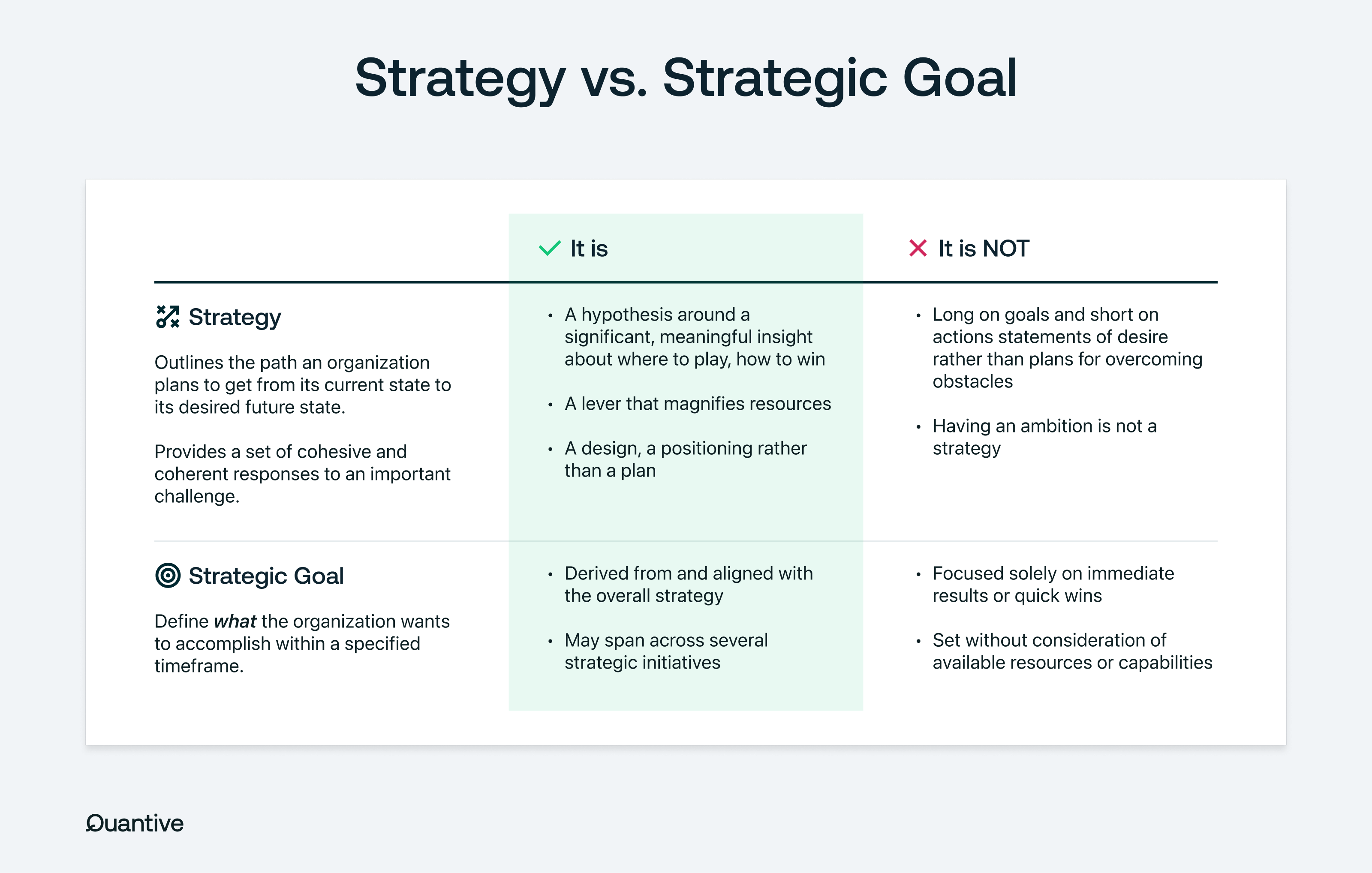
But here’s where it gets tricky. Just having a strategy isn’t enough. A strategy is like a roadmap, telling you where you want to go. Strategic goals set the milestones on that journey, but initiatives are the steps you take to get there. It’s like having an ambitious plan to climb a mountain — knowing the peak you want to reach and why it matters is great, but if you don’t plan the route, you’re not going anywhere. Let's dive into how to develop strategic initiatives and strategic objectives to create a competitive advantage for your organization.
Strategic initiatives step 1: Identify the challenge, need, or opportunity
It all starts here. What key issue or problem are you trying to solve or what opportunity do you want to seize? What types of strategic initiatives are important for your organization? Maybe your goal is to grow market share, cut costs, improve product development, or enter a new market. Whatever it is, you need to get to the root of the issue. Tools like SWOT (Strengths, Weaknesses, Opportunities, Threats) analysis or PESTLE (Political, Economic, Social, Technological, Legal, Environmental) can help you dig deeper and get a clear picture of what’s really going on.
Strategic initiatives step 2: Define the purpose and scope — and communicate it
Once you know what you’re dealing with, it’s time to articulate your initiative's purpose clearly. What’s the why, how, and what behind it? Ensure everyone understands why it’s important, how you will tackle it, and what success looks like.
It’s also crucial to define the scope.
Which teams are involved? How long will this take? And don’t forget the communication plan. Keeping everyone in the loop — whether they’re in marketing, IT, or legal — ensures everyone’s moving in the same direction. Think of it like a relay race; the whole team slows down if one runner doesn’t know where to hand off the baton.
Strategic initiatives step 3: Set specific OKRs and KPIs
Now, let’s get specific. Develop clear, measurable, and time-bound goals. OKRs (Objectives and Key Results) and KPIs (Key Performance Indicators) will help you track progress and stay focused. If you can, break things down into manageable steps or phases and ensure someone is accountable for each piece. Having a clear owner for the overall initiative (or its sub-components) means everyone knows their role in getting it across the finish line.
Strategic initiatives step 4: Execute, monitor, adapt
Execution is where the rubber meets the road when working on innovative initiatives. But it’s not just about getting things done; it’s about regularly checking in, measuring progress, and being ready to adapt. You might start with one plan, but you'll need to pivot as the business landscape shifts or new information comes to light.
Being adaptable is THE key to keeping your business level initiatives and overall strategy on track.
How technology bridges the gap for strategic initiatives
Historically, we’ve relied on PowerPoint for planning and communication and Excel for execution and tracking, but let’s be honest — there’s a gap. That’s where most strategic potential gets lost and strategic initiatives fail. You have a beautiful vision of your strategic priorities in one document, but everything falls apart once it’s time to act.
"It is between PowerPoint and Excel that most of the strategic potential gets buried — forever!"
At Quantive, we’ve developed a platform that works as the single source of truth for your strategic initiatives. It connects everything from planning to execution, helping leaders smoothly get from point A to point B with a successful implementation of complex strategic initiatives.
For example, say your initiative is about growth re-acceleration. Our software can help you:
Step 1: Identify the need and lay out the challenge.
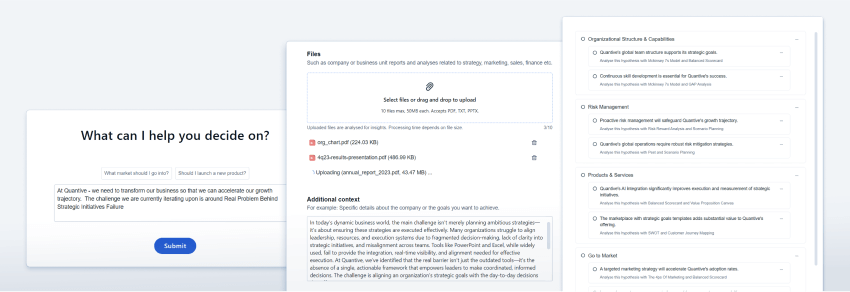
Step 2: Define the initiative’s purpose, set the scope of the strategic plan, and ensure every stakeholder is in the loop.
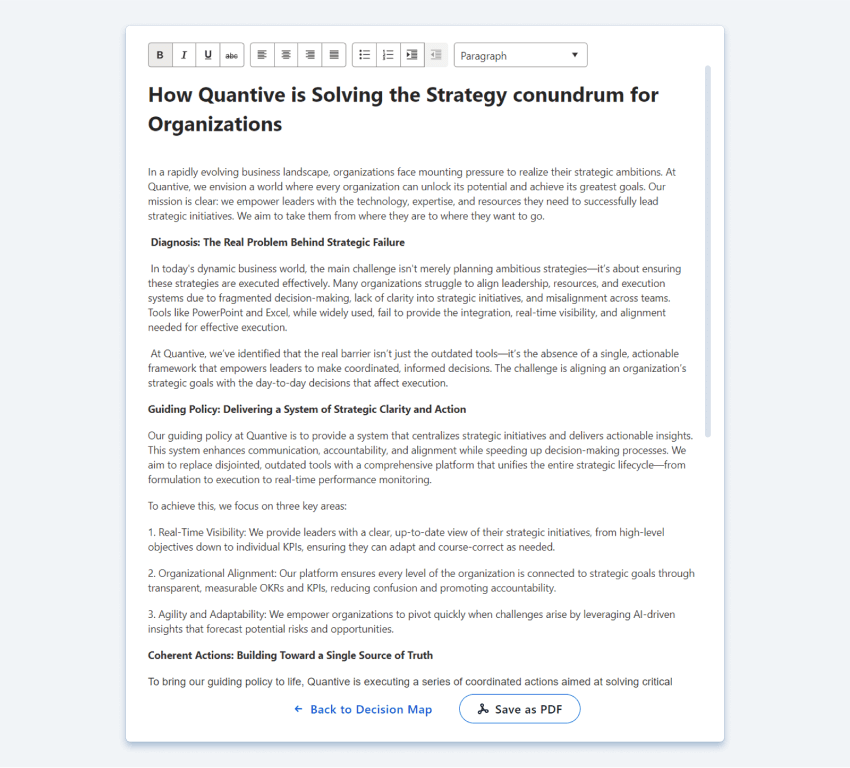
Step 3: Set OKRs and KPIs, tracking everything in real-time.
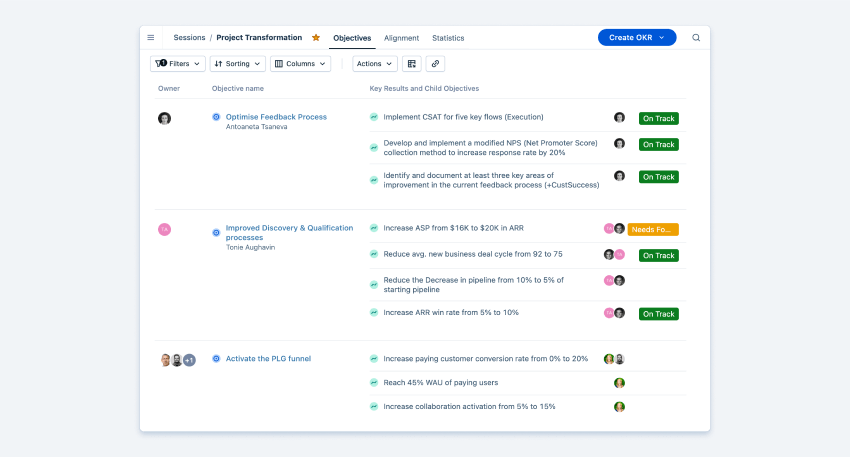
Step 4: Execute, adjust, and keep everyone aligned.
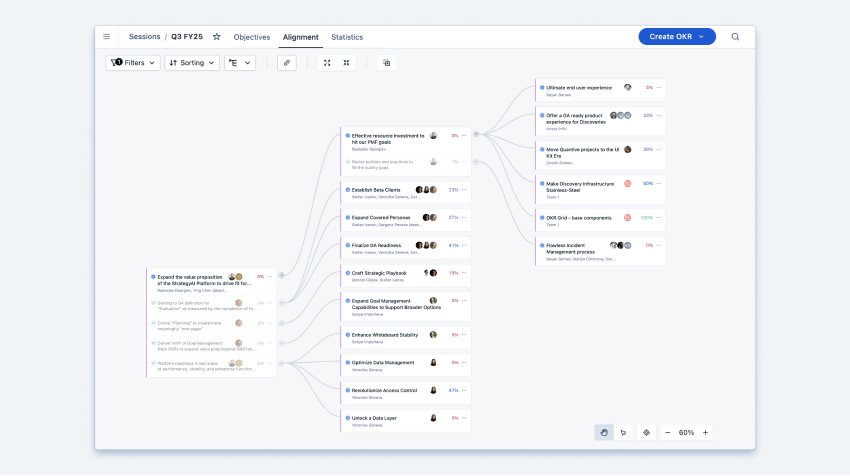
Ready to transform the way you run your strategic initiatives and implement your strategic vision? Contact us to learn more about how Quantive can help your organization drive better, faster strategic initiatives.





